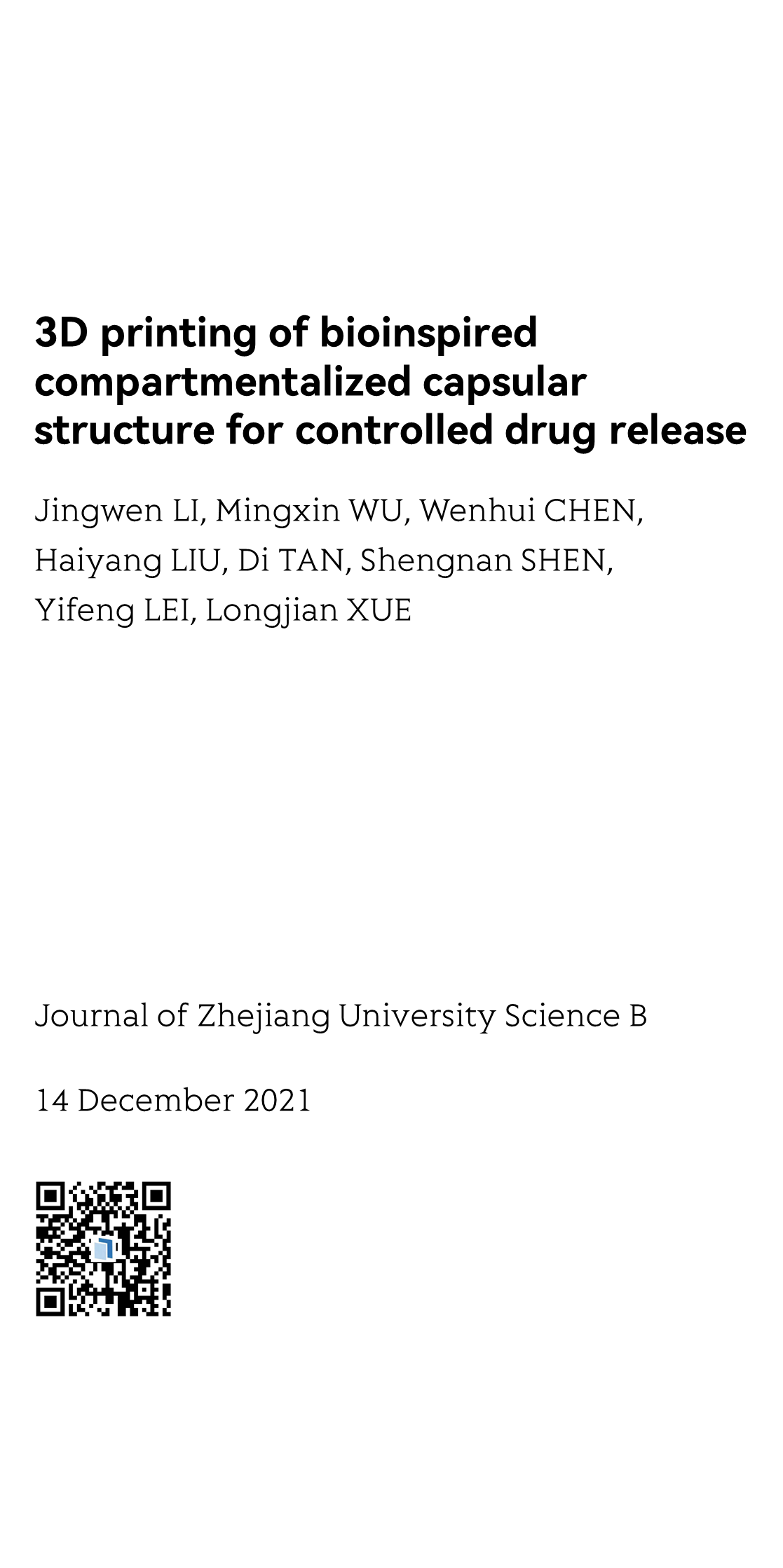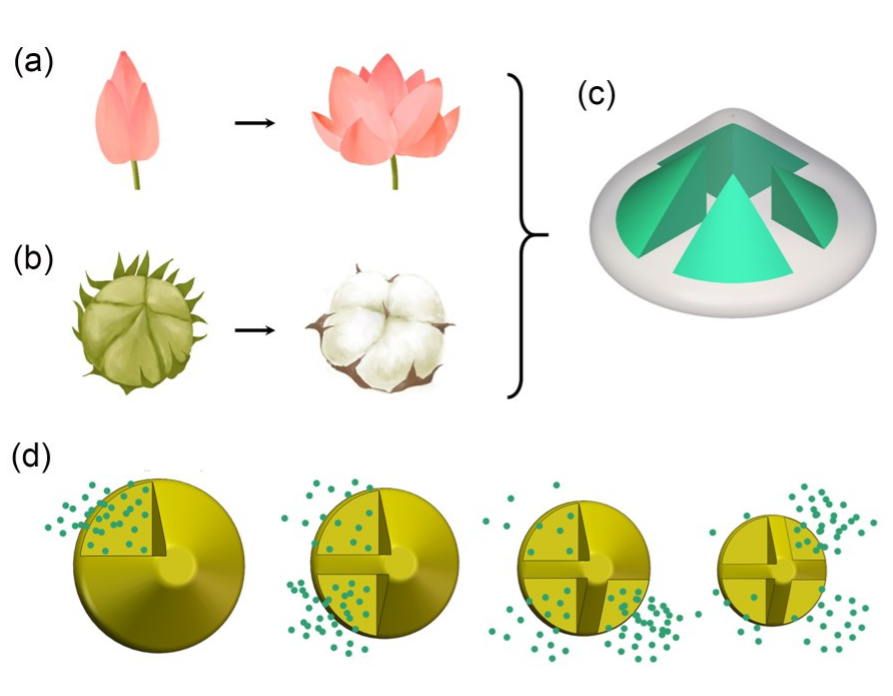(Peer-Reviewed) 3D printing of bioinspired compartmentalized capsular structure for controlled drug release
Jingwen LI 李静雯 ¹, Mingxin WU 武明信 ², Wenhui CHEN ¹, Haiyang LIU 刘海洋 ¹, Di TAN 谭迪 ¹, Shengnan SHEN 申胜男 ¹, Yifeng LEI 雷祎凤 ², Longjian XUE 薛龙建 ¹
¹ School of Power and Mechanical Engineering, Wuhan University, Wuhan 430072, China
中国 武汉 武汉大学动力与机械学院
² The Institute of Technological Science, Wuhan University, Wuhan 430072, China
中国 武汉 武汉大学工业科学研究院
Abstract
Drug delivery with customized combinations of drugs, controllable drug dosage, and on-demand release kinetics is critical for personalized medicine. In this study, inspired by successive opening of layered structures and compartmentalized structures in plants, we designed a multiple compartmentalized capsular structure for controlled drug delivery.
The structure was designed as a series of compartments, defined by the gradient thickness of their external walls and internal divisions. Based on the careful choice and optimization of bioinks composed of gelatin, starch, and alginate, the capsular structures were successfully manufactured by fused deposition modeling three-dimensional (3D) printing. The capsules showed fusion and firm contact between printed layers, forming complete structures without significant defects on the external walls and internal joints. Internal cavities with different volumes were achieved for different drug loading as designed.
In vitro swelling demonstrated a successive dissolving and opening of external walls of different capsule compartments, allowing successive drug pulses from the capsules, resulting in the sustained release for about 410 min. The drug release was significantly prolonged compared to a single burst release from a traditional capsular design. The bioinspired design and manufacture of multiple compartmentalized capsules enable customized drug release in a controllable fashion with combinations of different drugs, drug doses, and release kinetics, and have potential for use in personalized medicine.
Embedded solar adaptive optics telescope: achieving compact integration for high-efficiency solar observations
Naiting Gu, Hao Chen, Ao Tang, Xinlong Fan, Carlos Quintero Noda, Yawei Xiao, Libo Zhong, Xiaosong Wu, Zhenyu Zhang, Yanrong Yang, Zao Yi, Xiaohu Wu, Linhai Huang, Changhui Rao
Opto-Electronic Advances
2025-05-27
Wearable photonic smart wristband for cardiorespiratory function assessment and biometric identification
Wenbo Li, Yukun Long, Yingyin Yan, Kun Xiao, Zhuo Wang, Di Zheng, Arnaldo Leal-Junior, Santosh Kumar, Beatriz Ortega, Carlos Marques, Xiaoli Li, Rui Min
Opto-Electronic Advances
2025-05-27
Integrated photonic polarizers with 2D reduced graphene oxide
Junkai Hu, Jiayang Wu, Di Jin, Wenbo Liu, Yuning Zhang, Yunyi Yang, Linnan Jia, Yijun Wang, Duan Huang, Baohua Jia, David J. Moss
Opto-Electronic Science
2025-05-22
Structural color: an emerging nanophotonic strategy for multicolor and functionalized applications
Wenhao Wang, Long Wang, Qianqian Fu, Wang Zhang, Liuying Wang, Gu Liu, Youju Huang, Jie Huang, Haoyuan Zhang, Fuqiang Guo, Xiaohu Wu
Opto-Electronic Science
2025-04-25







